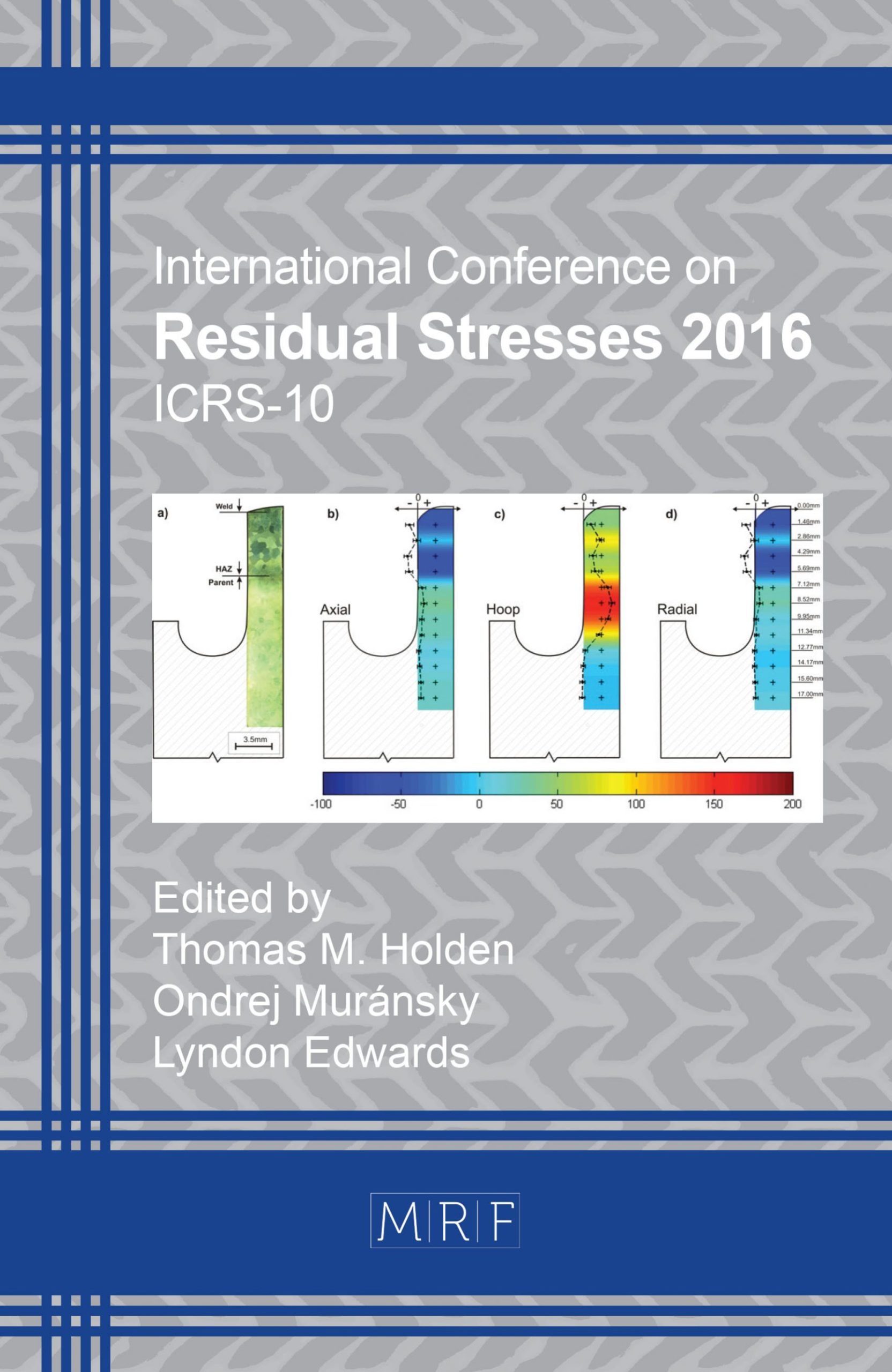Residual Stresses in Dengeling-Treated Aluminum Alloy AA 7050
L. Selegård, R.L. Peng, A. Billenius, G. Petersén, M. ESS, M. Jonsson
download PDFAbstract. Dengeling is a new method for mechanical surface treatment of metallic parts to enhance fatigue properties. The treatment produces consecutive lines of indents by a spherical indenter, resulting in compressive residual stresses in a surface layer. This paper investigated residual stresses, surface roughness and near surface deformation, in specimens of AA 7050 T7451 after different dengeling treatments. The effect of indent overlap (0%, 25% and 50%) and indenter size (∅3 and ∅8 mm) were studied. X-Ray diffraction measurements revealed that plastic deformation and compressive residual stresses were generated in a surface layer of about 1 mm by treatments using the ∅3 mm indenter and about 1.2 mm by treatment using the ∅8 mm indenter. Anisotropic residual stress fields were observed with higher compressive residual stresses (-360 MPa for 50% indent overlap, independent of indenter size) perpendicular to indent lines and lower (max -270 MPa for all the treatments) parallel to indent lines. Increasing the overlap between indents gave higher subsurface compressive residual stresses only in the transverse direction of indent lines. It also reduced the surface roughness. Best surface finish (Ra below 1 μm) was obtained when using the ∅8 mm indenter and 50% indent overlap.
Keywords
Dengeling, Mechanical Surface Treatment, Aluminum Alloy, Residual Stress, Roughness
Published online 12/22/2016, 6 pages
Copyright © 2016 by the author(s)
Published under license by Materials Research Forum LLC., Millersville PA, USA
Citation: L. Selegård, R.L. Peng, A. Billenius, G. Petersén, M. ESS, M. Jonsson, ‘Residual Stresses in Dengeling-Treated Aluminum Alloy AA 7050’, Materials Research Proceedings, Vol. 2, pp 425-430, 2017
DOI: http://dx.doi.org/10.21741/9781945291173-72
The article was published as article 72 of the book Residual Stresses 2016
![]() Content from this work may be used under the terms of the Creative Commons Attribution 3.0 licence. Any further distribution of this work must maintain attribution to the author(s) and the title of the work, journal citation and DOI.
Content from this work may be used under the terms of the Creative Commons Attribution 3.0 licence. Any further distribution of this work must maintain attribution to the author(s) and the title of the work, journal citation and DOI.
References
[1] K.A. Soady, Life assessment methodologies incoroporating shot peening process effects: Mechanistic consideration of residual stresses and strain hardening: Part 1 – Effect of shot peening on fatigue resistance, Mater. Sci. Technol. 29 (2013) 637-651. http://dx.doi.org/10.1179/1743284713Y.0000000222
[2] A.T. Bozdana, On the mechanical surface enhancement techniques in aerospace industry – A review of technology, Aircr Eng Aerosp Technol. 77 (2005) 279-292. http://dx.doi.org/10.1108/00022660510606349
[3] M. Benedetti, V. Fontanari, P. Scardi, C.L.A. Ricardo, M. Bandini, Reverse bending fatigue of shot peened 7075-T651 aluminium alloy: The role of residual stress relaxation, Int. J. Fatigue. 31 (2009) 1225-1236. http://dx.doi.org/10.1016/j.ijfatigue.2008.11.017
[4] W. Zinn, B. Scholtes, Mechanical Surface Treatments of Lightweight Materials – Effects on Fatigue Strength and Near-Surface Microstructures, J Mater Eng Perform. 8 (1999) 145-151. http://dx.doi.org/10.1361/105994999770346972
[5] L. Wagner, Mechanical surface treatments on titanium, aluminum and magnesium alloys, Mater. Sci. Eng. A. 263 (1999) 210-216. http://dx.doi.org/10.1016/S0921-5093(98)01168-X
[6] I.C. Noyan, J.B. Cohen, Residual Stress Measurement by Diffraction and Interpretation, Springer-Verlag, (1987).































